
Further case studies
Suppleness
Promotes fluid movement to prevent signs of wear and tear, for a springy, butter-soft sitting sensation and for myofascial harmony.
Mare Aminah
Breed: Purebred Arabian
Age at start of training: 6 years
History: Multiple throat obstructions, after last throat obstruction (5 years old at the time) diffuse lameness in the left rear
Customer: Owner Bianca Reisenbichler
In cooperation with: Vetchiropractic Mag. vet Katharina Bosch
Lesson interval and adjustment of the training plan: every 8-12 weeks
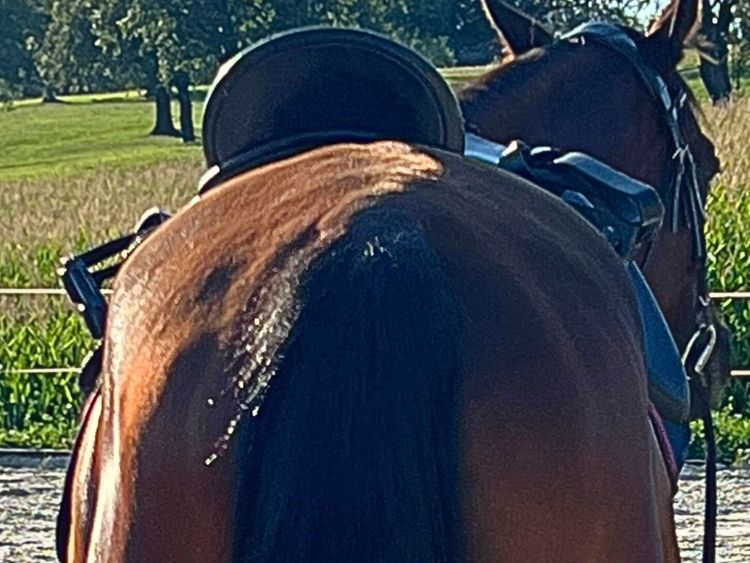
Before
The mare had clearly visible tension in the area of the sacroiliac joint as a result of her crookedness and postural restraint.
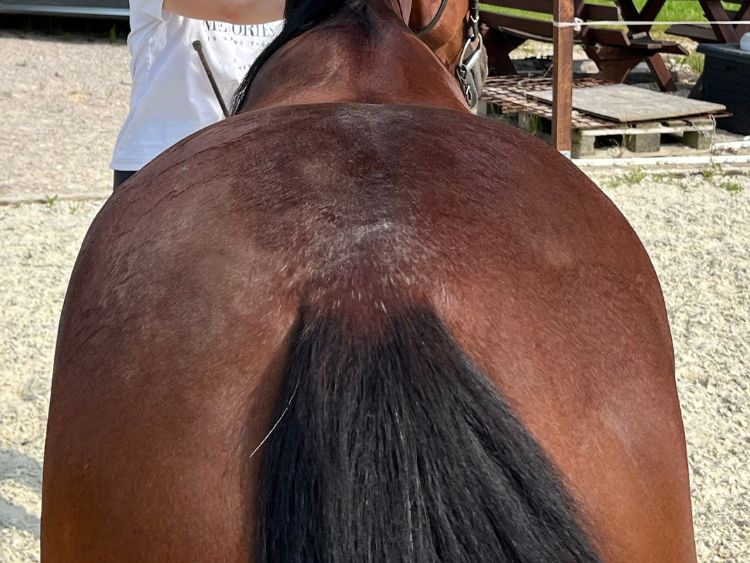
After Equisensomotoric® training
Through further feed optimization and regular training, the mare muscled up well and can be ridden soundly in all gaits.
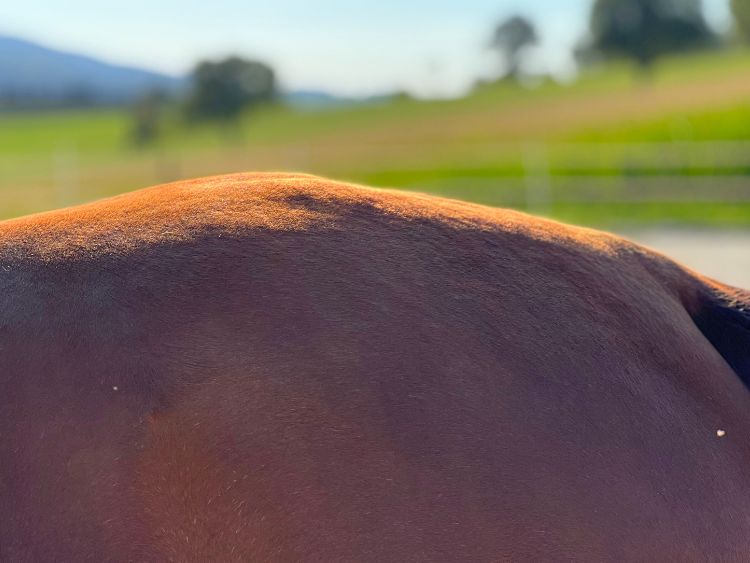
Before
Typical appearance of a protruding sacroiliac joint and lack of croup muscles due to crookedness, unsuitable saddles, incorrect training or other reasons (humped appearance and shaggy hair in this area)
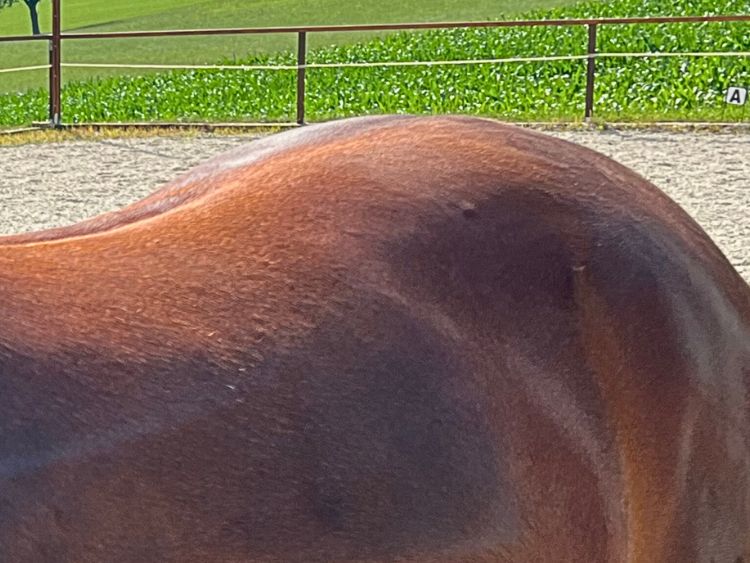
After Equisensomotoric® training
Even, round croup (round croup line “as if from a single mold” and smooth coat)
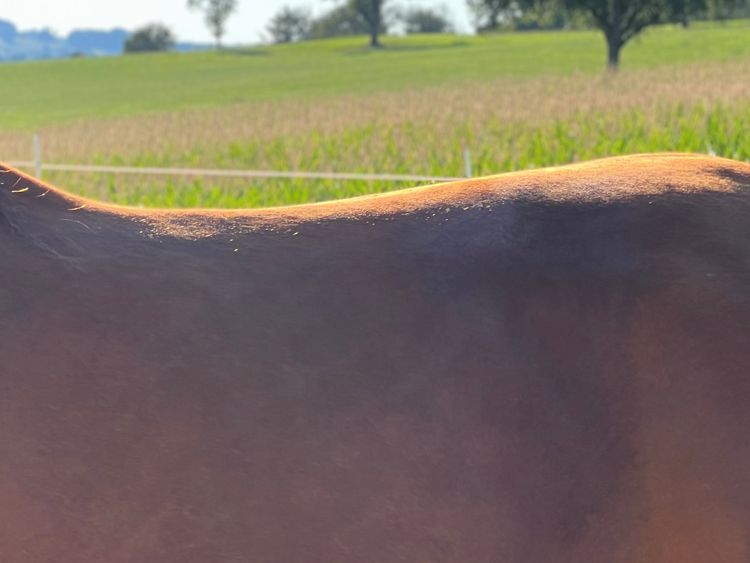
Before
A-shaped back cross-section due to lack of back muscles
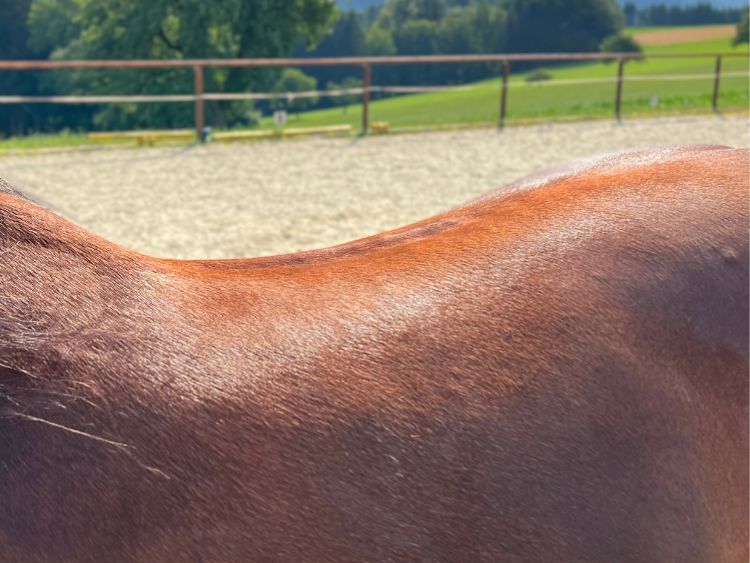
After Equisensomotoric® training
Bulging back muscles (split croup)
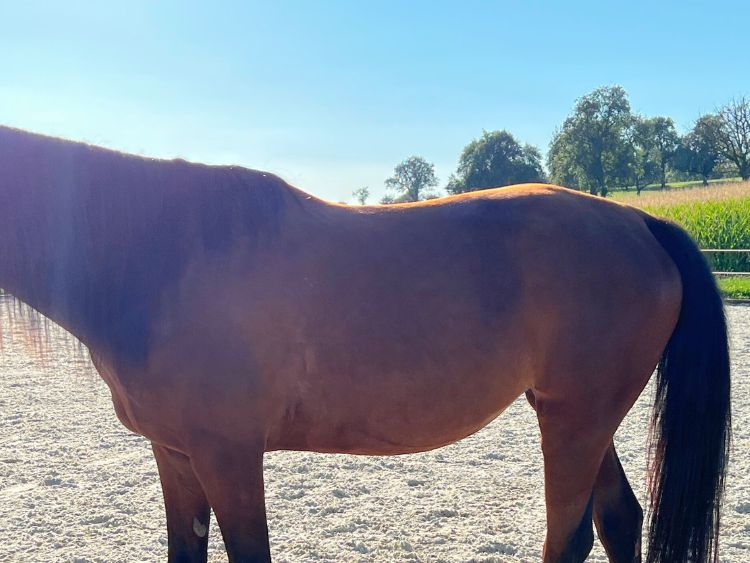
Before
Insufficient muscling
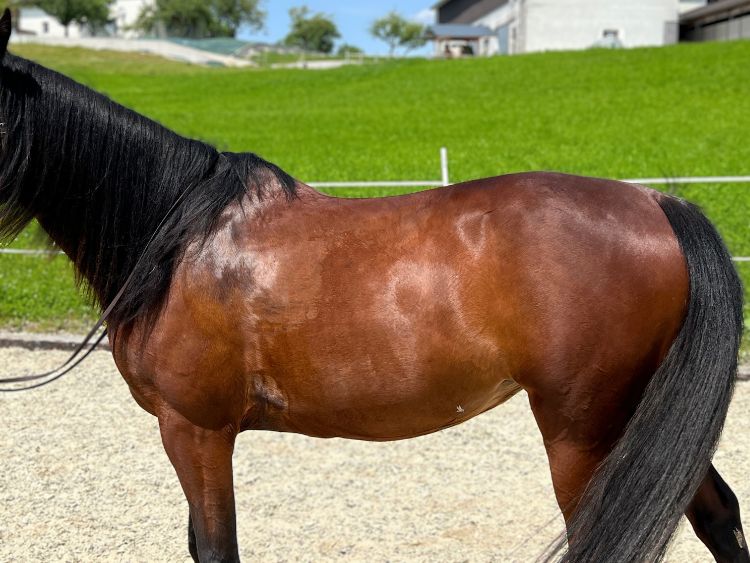
After Equisensomotoric® training
Harmonious muscling
Mare R.
Breed: Hanoverian
Age at start of training: 11 years
Customer: Larissa Wimmer
In cooperation with: Vetchiropractic Mag. vet Katharina Bosch
Lesson interval and adjustment of the training plan: every 6-8 weeks
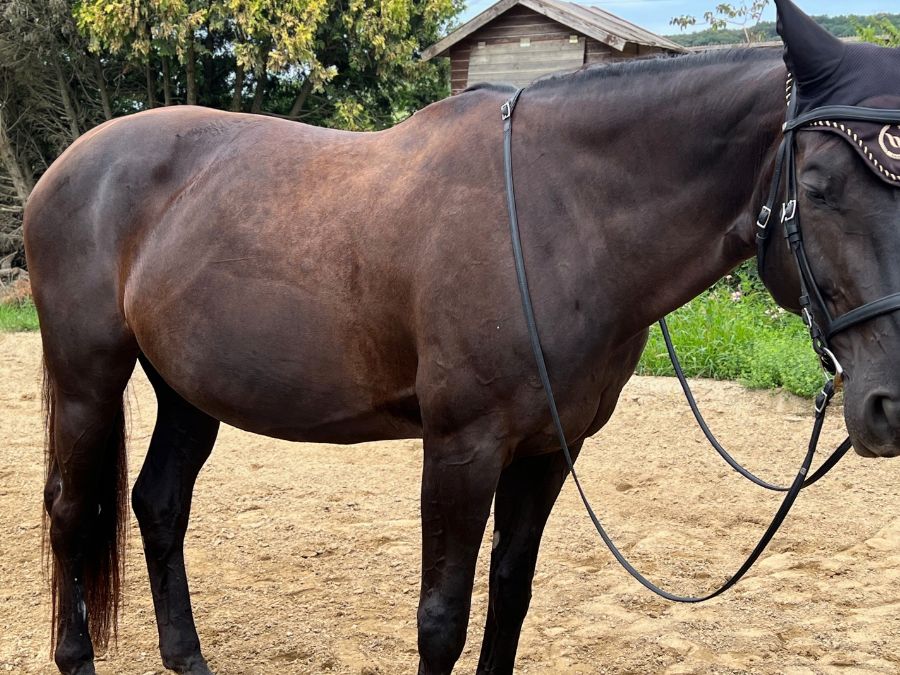
Before
A sloping torso with visible tension in the neck and poll due to crookedness and an unsuitable saddle
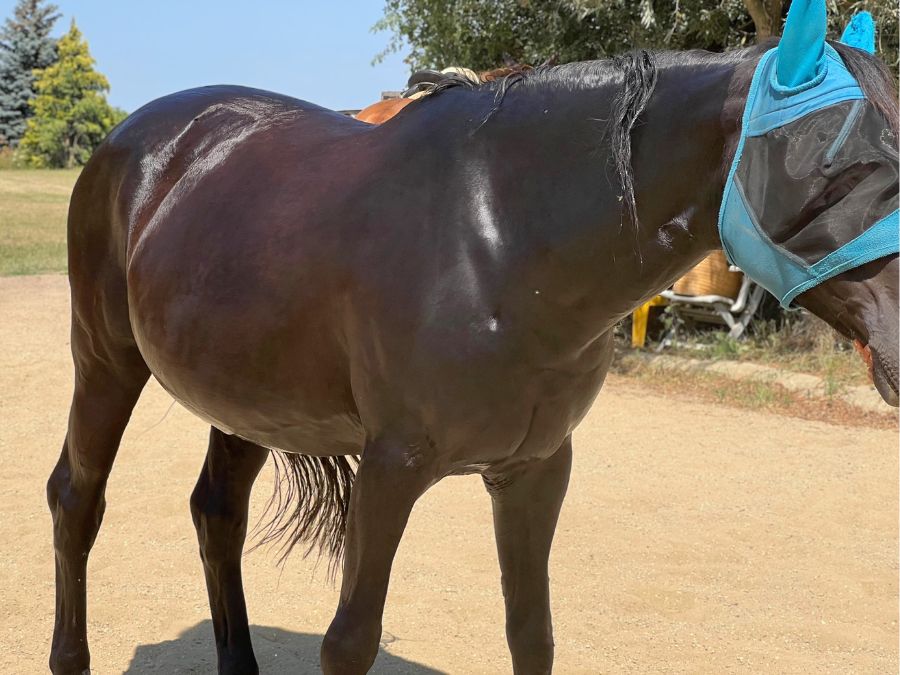
After Equisensomotoric® training
Through training and a saddle change, a flow of movement was created in the body, which results in even, smooth musculature
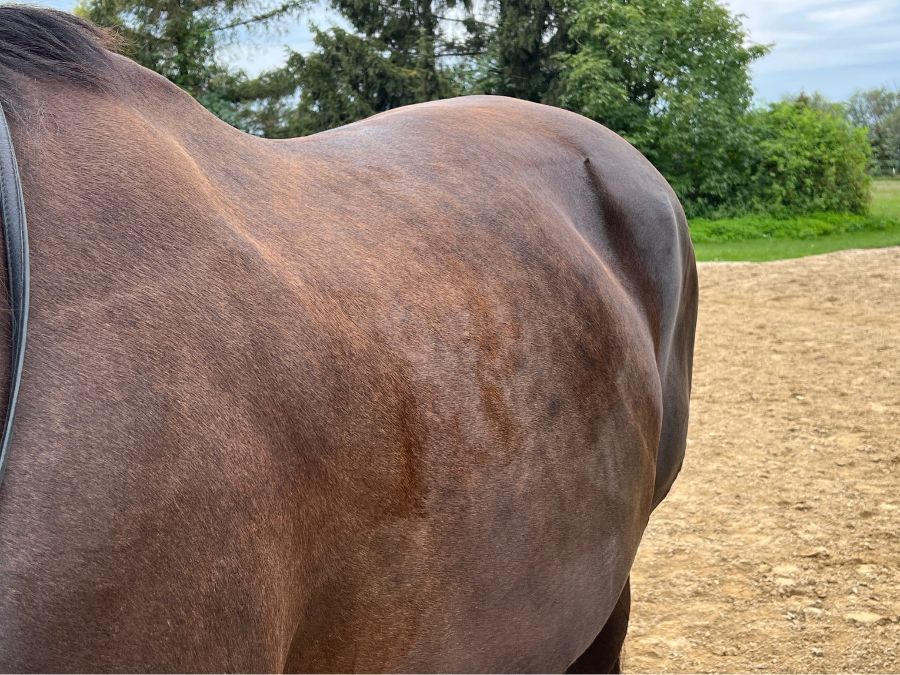
Before
Atrophy behind the shoulder blade caused by crookedness and an unsuitable saddle
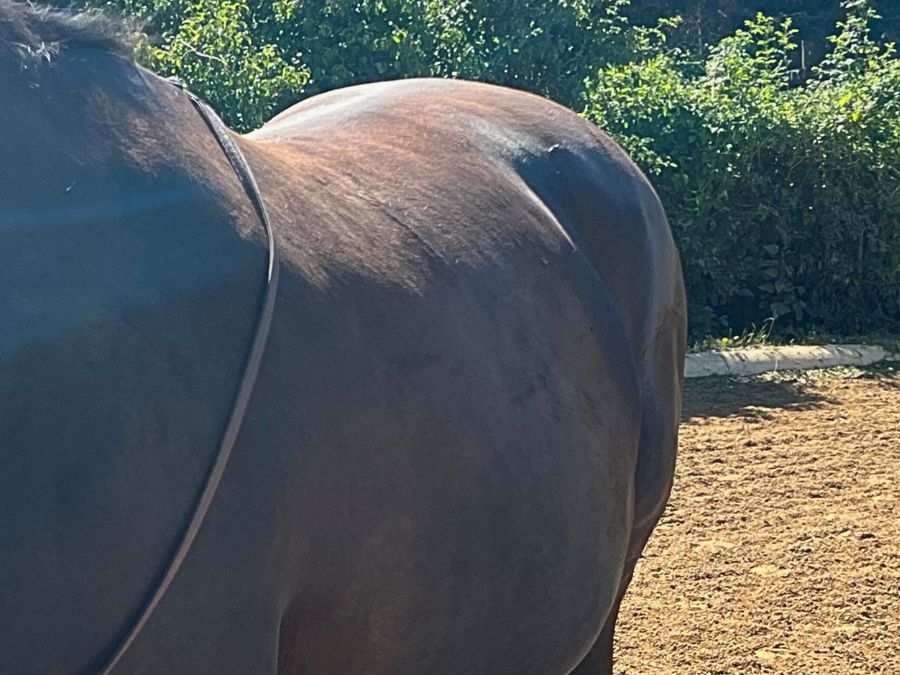
After Equisensomotoric® training
Replenished back muscles
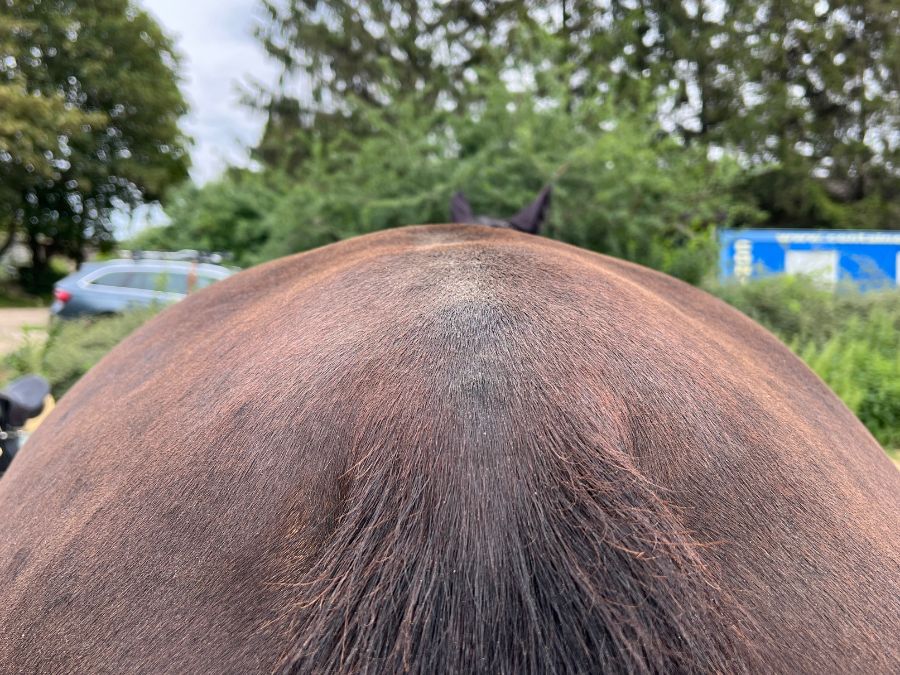
Before
Tension (humped appearance) in the area of the sacroiliac joint caused by crookedness and an unsuitable saddle as well as a lack of croup musculature

After Equisensomotoric® training
Harmonious, plump croup muscles
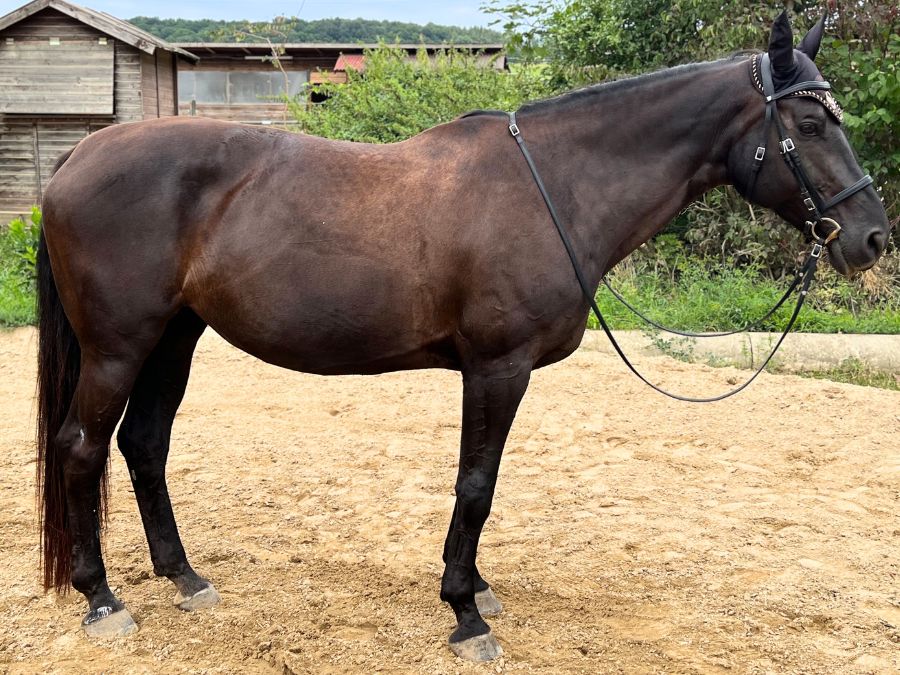
Before
Tense, restrained posture
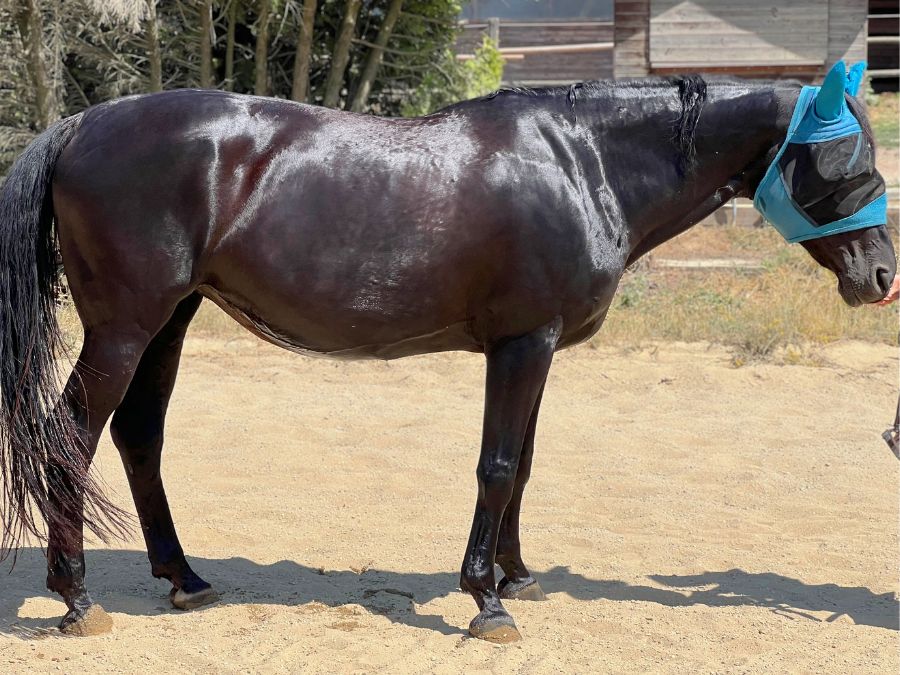
After Equisensomotoric® training
Relaxed, self confident posture

